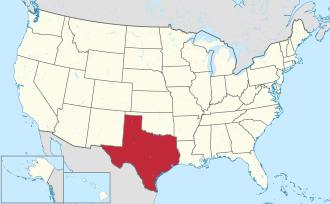Parker County | |
|---|---|
 The Parker County courthouse in Weatherford | |
 Location within the U.S. state of Texas | |
 Texas's location within the U.S. | |
| Coordinates: 32°47′N97°49′W / 32.78°N 97.81°W | |
| Country | |
| State | |
| Founded | 1856 |
| Named after | Isaac Parker, Texas legislator |
| Seat | Weatherford |
| Largest city | Weatherford |
| Area | |
• Total | 910 sq mi (2,400 km2) |
| • Land | 903 sq mi (2,340 km2) |
| • Water | 6.6 sq mi (17 km2) 0.7% |
| Population (2020) | |
• Total | 148,222 |
• Estimate (2024) | 179,707 |
| • Density | 160/sq mi (62/km2) |
| Time zone | UTC−6 (Central) |
| • Summer (DST) | UTC−5 (CDT) |
| Congressional districts | 12th, 25th |
| Website | www |
Parker County is a county located in the U.S. state of Texas. As of the 2020 census, its population was 148,222. [1] The county seat is Weatherford. [2] The county was created in 1855 and organized the following year. [3] It is named for Isaac Parker, a state legislator who introduced the bill that established the county in 1855. [4] Parker later fought in the Texas Brigade. [5]
Contents
- Geography
- Highest point
- Major highways
- Adjacent counties
- Communities
- Cities (multiple counties)
- Cities
- Towns
- Census-designated places
- Unincorporated communities
- Demographics
- Politics
- Notable people
- See also
- References
- External links
Parker County is included in the Dallas-Fort Worth-Arlington metropolitan statistical area.
